State of Student Engagement in Higher Education (U.S.)
Introduction: The Engagement Crisis
That means a majority of undergraduates—and nearly half of graduate students—are experiencing at least some level of disengagement. This disengagement has ripple effects not only on student success, but also on workforce preparedness and civic participation.
Engagement is no longer a secondary concern: it is a central challenge for higher education today.
What Do We Mean by Student Engagement?
Student engagement is commonly defined as the time and effort students devote to educationally purposeful activities, both inside and outside the classroom, and the degree to which institutions encourage this involvement (NSSE, 2022). Engagement spans multiple dimensions:
- Classroom participation and effort
- Emotional and cognitive investment in learning
- Preparation and academic behaviors (e.g., reading, homework)
- Collaboration with peers and faculty
- Involvement in research, career preparation, and campus life
Classroom Participation & Academic Effort
- Class attendance has fallen sharply. SERU data from 22 large public research universities (≈1.1 million undergraduates) show that by 2022–23, students were spending about 1.5 fewer hours per week in class, labs, or discussion sections than they did in 2018–19. This decline was consistent across majors and year levels.
- Peer interaction outside class is down. In the Computing Research Association’s Data Buddies Survey, the share of freshmen who interacted with classmates outside lectures at least weekly dropped from ~68% in 2019 to ~56% in 2020, rebounding only slightly to ~58% in 2021. Seniors showed a similar decline (71% → 66% → 63%).
- Faculty–student connections have weakened. In the SERU survey, the proportion of students reporting that a professor knew their name fell by 15 percentage points between 2019 and 2021, and by 2023 had recovered only partially—still 7 points below pre-pandemic levels.
Research, Career, and Campus Involvement
- Participation in faculty-mentored research declined from 25% of students in 2018–19 to 20% in 2022–23.
- On-campus employment is down: fewer students hold campus jobs, and those who do work spend ~1 hour less per week compared to pre-pandemic levels.
- Internship and practicum participation also decreased between 2019 and 2023.
- Extracurricular involvement has dropped: nearly one-third of students now spend zero hours per week on clubs or campus organizations, a share that rises to ~50% among community college and part-time working students.
- By 2022, fewer students than ever reported holding leadership roles in student organizations or participating in community service and service-learning projects.
In sum, multiple studies of today’s college students point to widespread disengagement: lower collaboration, less class preparation, and reduced participation in enriching activities.
This convergence of evidence indicates an urgent engagement problem – one that innovative approaches (e.g. interactive active-learning models like Breakout Learning) aim to address by making learning more hands-on and participatory.
Breakout Learning:
Early Evidence of Impact on Student Engagement
Preliminary Findings
Student Survey Results
Dr. Peter Simonson tested Breakout Learning in large university classes
- Engagement Gains: Students showed significant increases on 7 engagement questions, including equal participation and quality of group discussions. For example, disagreement dropped from 40% to 20% on the statement “everyone contributes equally”
- Confidence in Mastery: Post-Breakout, agreement with “I feel confident in analyzing and creating a launch strategy” rose from 62% to 95%
When I work with other students in a small group, we build off each other’s ideas and discuss different solutions or points of view.
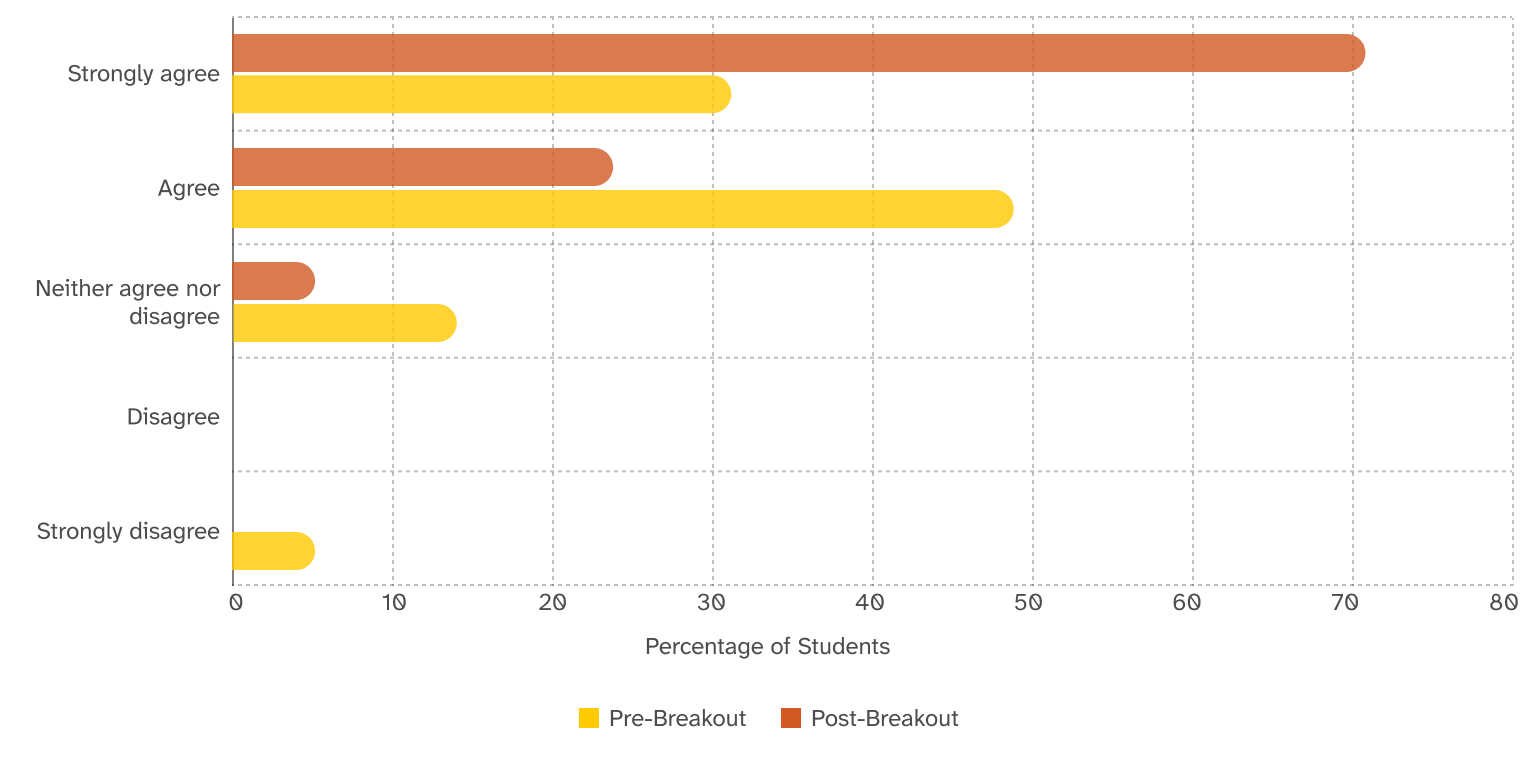
In a small group setting, my peers and I feel comfortable disagreeing with each other and asking questions when ideas are shared.
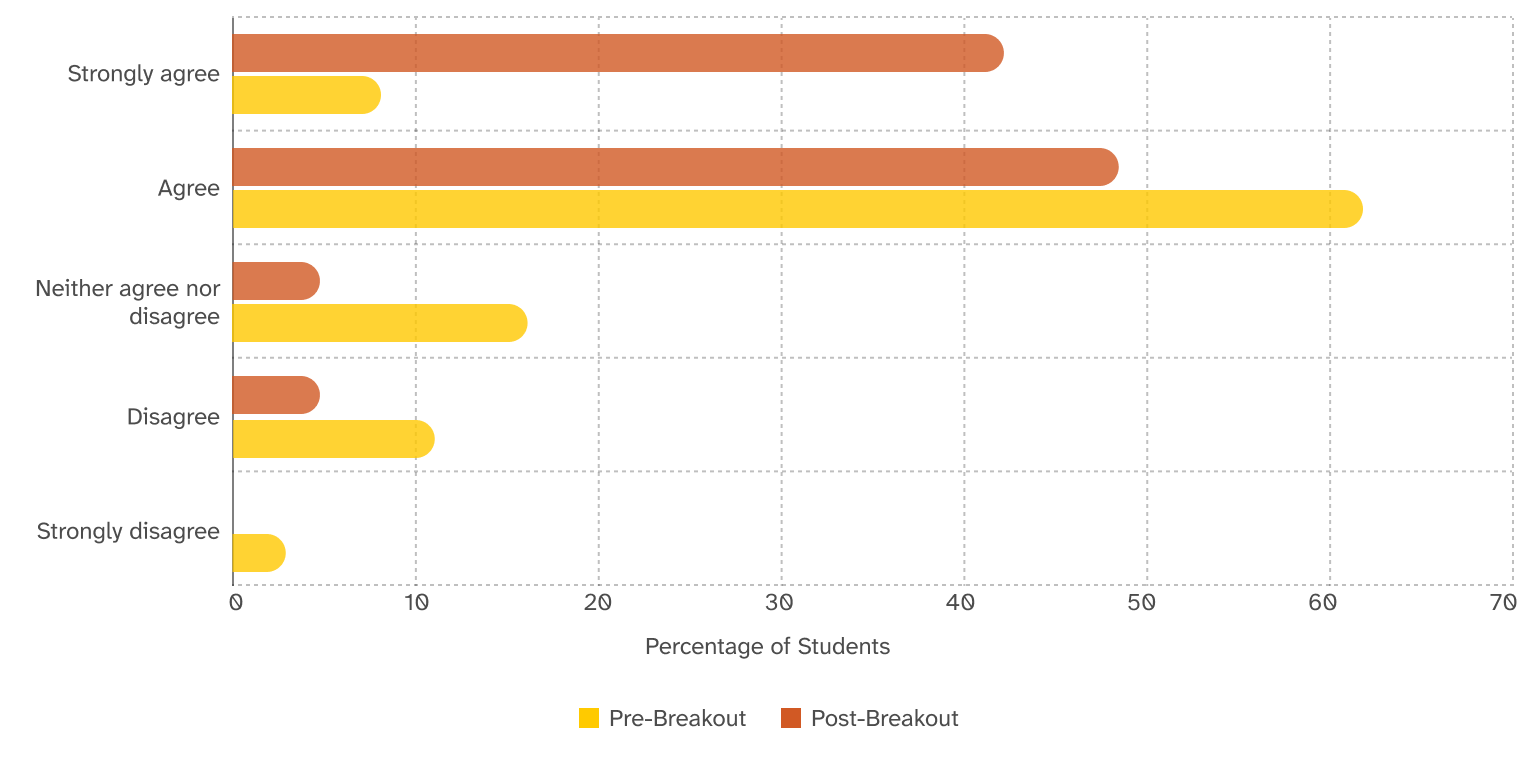
Working collaboratively with my peers is a productive way to build knowledge and helps reinforce a more meaningful learning experience.
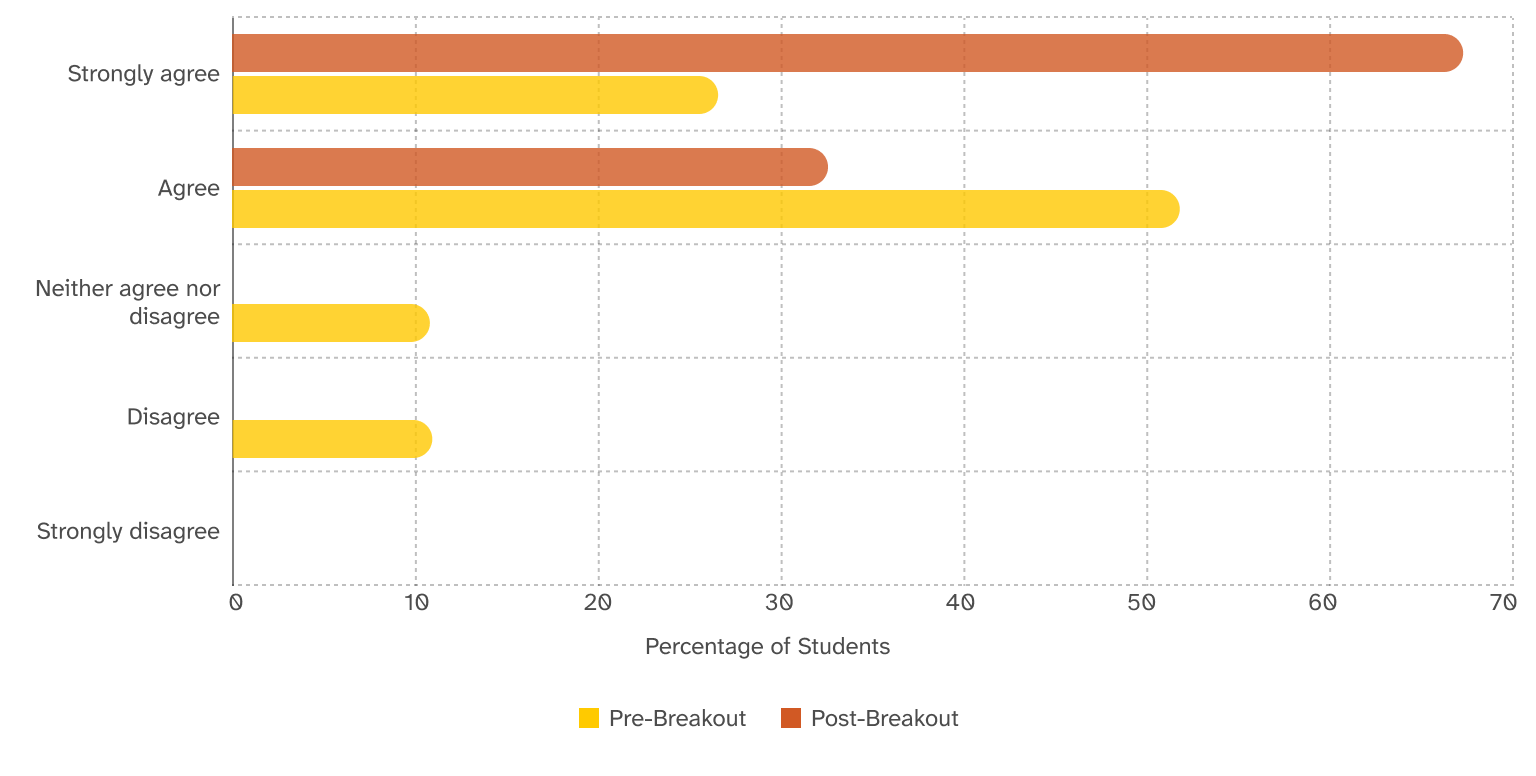
I feel engaged with the presentation of the class content and find the materials useful for understanding the course concepts.
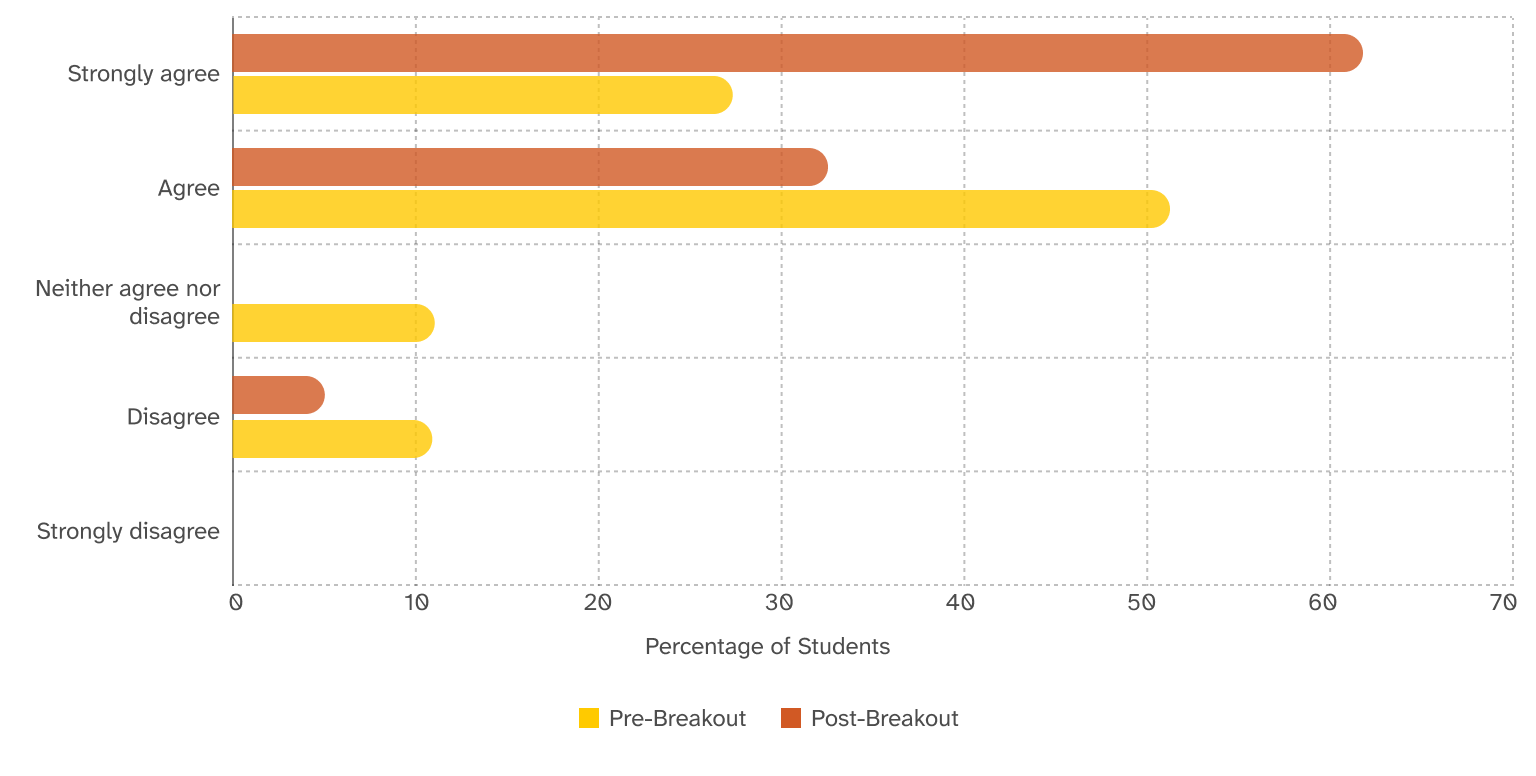
UCLA Undergraduate Student Survey (2025)
- Engagement: 70%+ found the platform engaging or highly engaging Breakout Learning Feedback
- Learning Value: Students described it as “interactive,” “fun,” and “helped refine what I thought I knew through discussion.”
- Challenges: Some frustration with AI grading transparency and technical glitches.
In a small group setting, my peers and I feel comfortable disagreeing with each other and asking questions when ideas are shared.
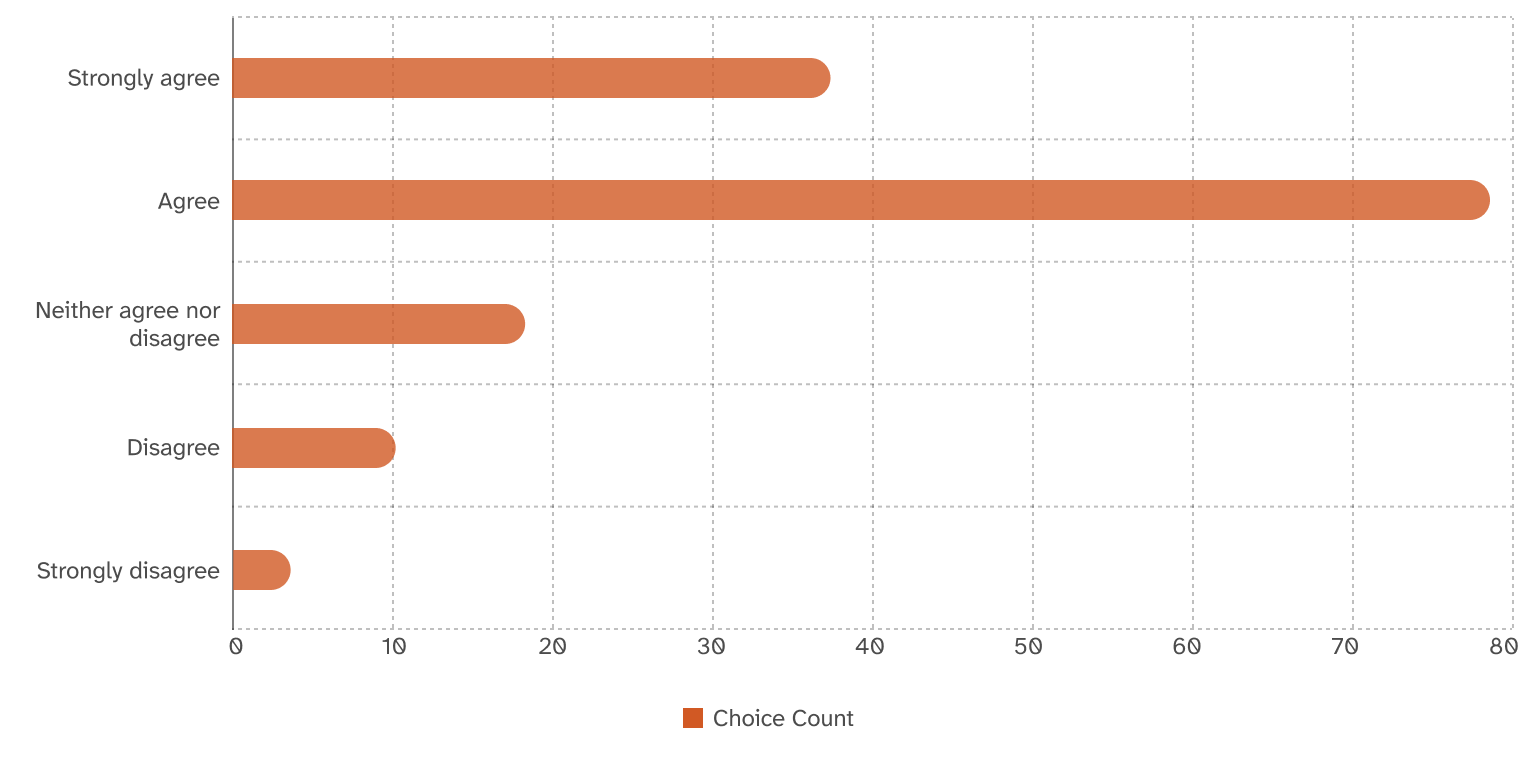
How engaging were the features (e.g. group discussions, peer reviews)?
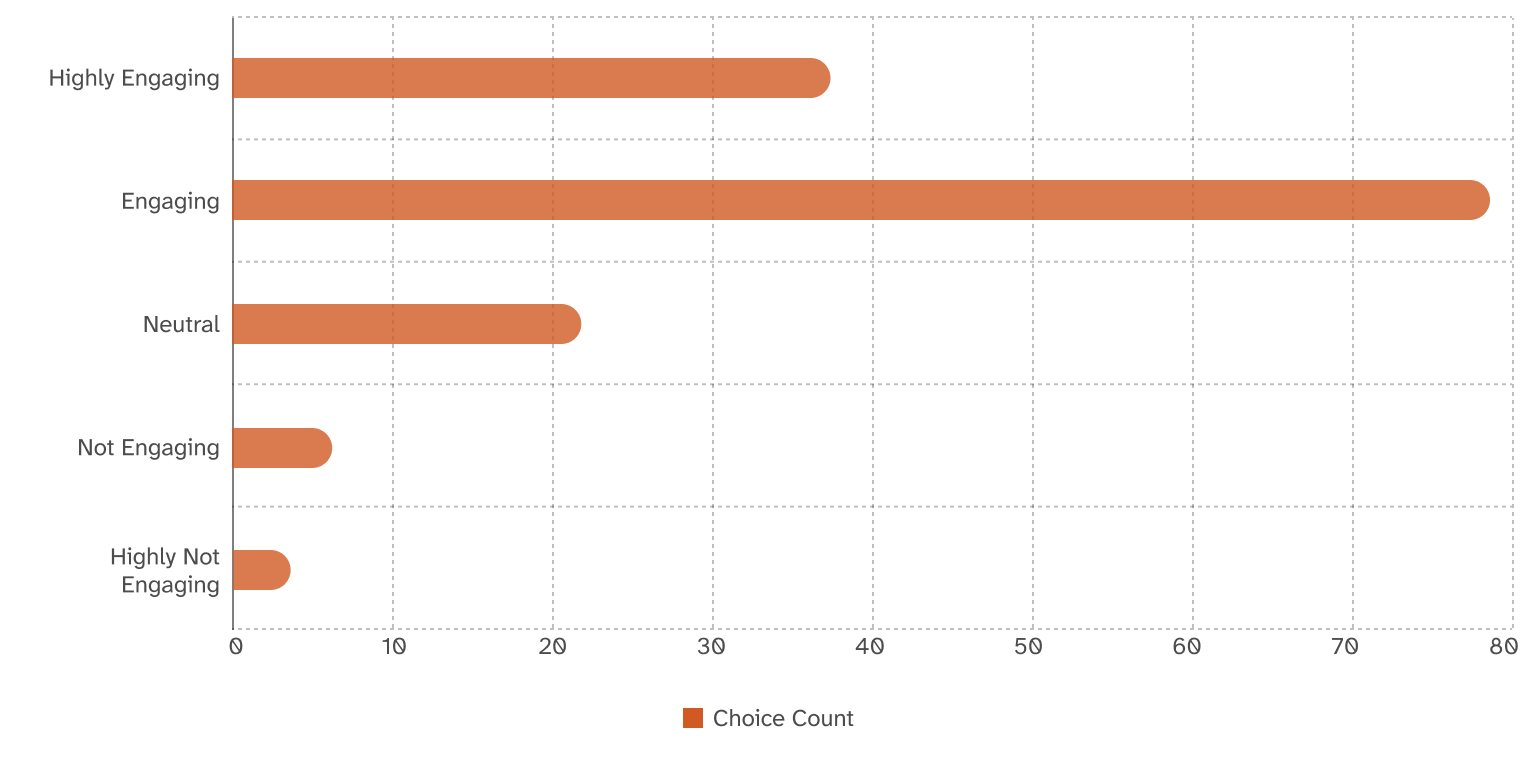
Which feature of the platform did you find most helpful? - Selected Choice
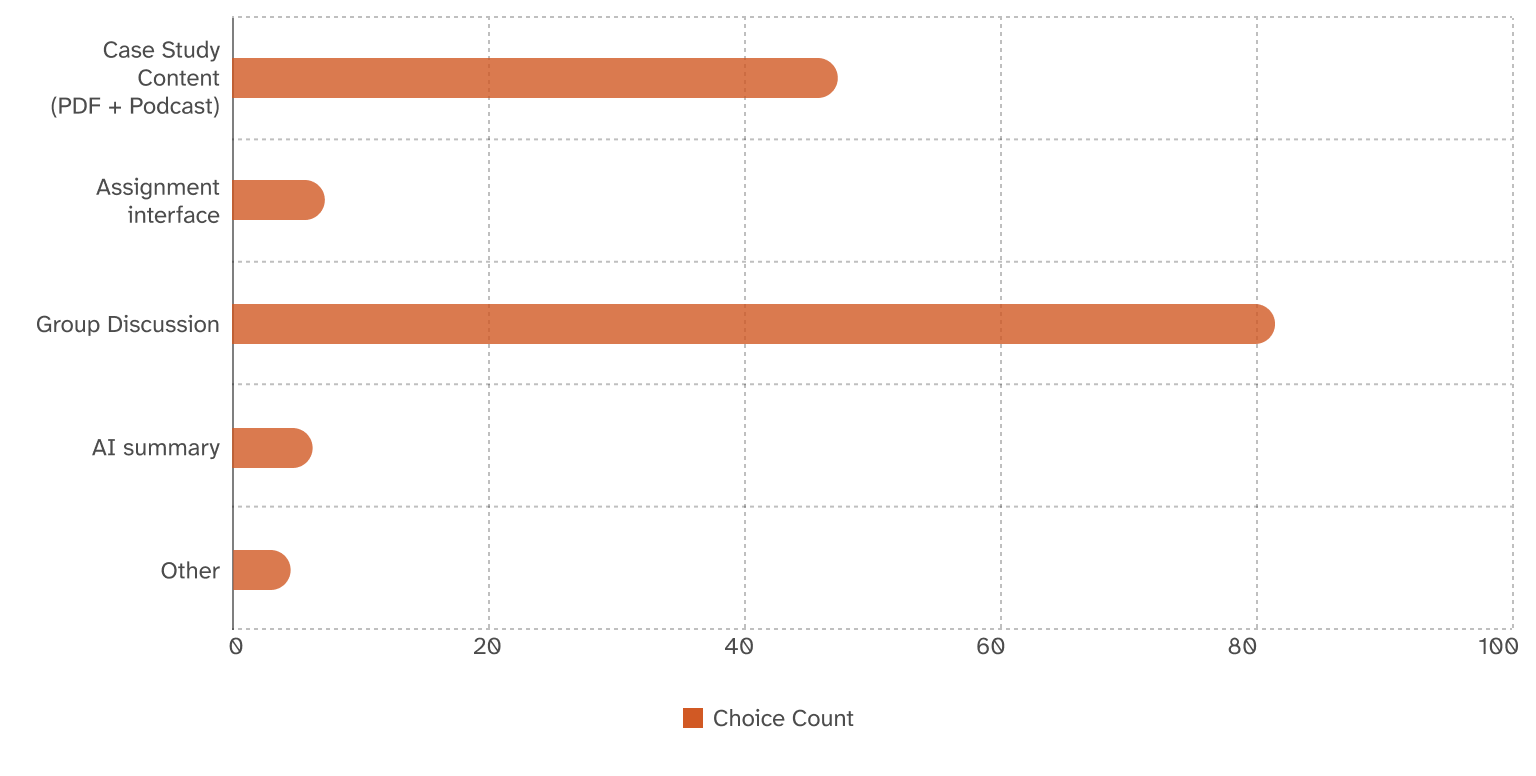
Conclusion
Of course, these are still early days. Larger-scale, multi-institutional research will be needed to fully understand the impact. But the initial results are promising—and, just as importantly, the student voices behind them are clear. Students appreciate the structure, interactivity, and peer-to-peer dialogue that Breakout enables.
We also take their critiques seriously. Calls for more flexible navigation, clearer grading calibration, and reduced repetitiveness are guiding our next wave of improvements. Breakout Learning is not a finished product—it’s a growing, evolving tool shaped by the very learners and educators who use it.
Join Us
To try Breakout in your classroom and learn more about participating, schedule a meeting with a member of our team.
